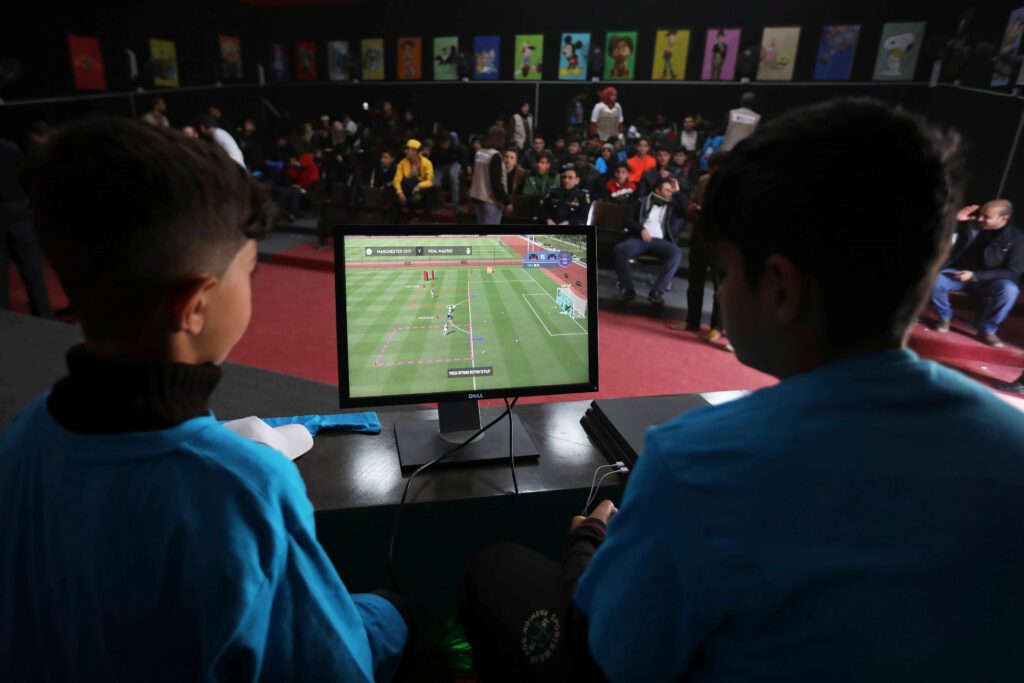Video games are a form of entertainment that combines art and technology. Game development includes character and environment design, animation, sound design, and technology components such as game engines, programming languages, and graphics processing units (GPUs). Game designers work closely with artists and programmers to create cohesive and engaging visuals and mechanics. The intersection of art and technology in video game design results in immersive worlds and engaging gameplay that capture the imagination of gamers around the world. The industry requires a deep understanding of both art and technology, along with project management and communication skills.
Introduction:
Video games are one of the most popular forms of entertainment in the world. But have you ever stopped to think about how these games are made? Video games are a unique medium that intersects both art and technology. In this article, we will explore the intersection of art and technology in video game design.
Art:
Video games are essentially an interactive art form, and there are many aspects of game development that are directly tied to art. These include character and environment design, animation, and sound design. Character design involves creating the visual appearance of the game’s main characters. This involves coming up with concepts for how the characters look and what their clothing and accessories are like.
Environment design involves creating the game’s virtual world, including landscapes, buildings, and other structures. This requires creating 3D models and textures to bring the game world to life. Animation is also an important part of game development, as it brings the game’s characters and environments to life. Finally, sound design is essential in creating an immersive gaming experience. Sound designers use a combination of sound effects and music to create a cohesive atmosphere in the game.
Technology:
While there is a lot of artistic creativity involved in video game design, technology also plays a critical role. Game engines, programming languages, and graphics processing units are all essential components in creating a video game. A game engine is a software platform that provides developers with the necessary tools to create a video game, including physics engines, AI systems, and graphics engines. Programming languages, such as C++ and Java, are used to write the code that brings the game’s mechanics to life.
Graphics processing units, or GPUs, are specialized chips designed to perform complex visual calculations. GPUs are essential for rendering 3D graphics in video games, and they play a critical role in creating visually stunning games. In addition to these technical aspects, video game developers must also consider issues related to user experience, such as game controls, camera angles, and screen layout.
The Intersection of Art and Technology:
The intersection of art and technology in video game design is truly fascinating. Game developers must balance creative expression with technical expertise to create engaging and visually stunning games. This requires a deep understanding of both art and technology, as well as strong project management and communication skills.
The game development process typically begins with a concept or idea. From there, game designers will work on creating a game design document, which outlines the game’s mechanics, art style, and storyline. Next comes the actual development process, which involves creating the game’s assets, programming the game mechanics, and testing the game for bugs and glitches.
Throughout the development process, game designers will work closely with artists and programmers to ensure that the game’s visuals and mechanics are cohesive and engaging. They must also consider issues related to user experience, such as game controls and camera angles. Once the game is complete, it is tested extensively to ensure that it is ready for release.
Conclusion:
Video game design is a complex process that requires both artistic creativity and technical expertise. The intersection of art and technology in video game design is what makes this medium so unique and engaging. By balancing creative expression with technical expertise, game designers are able to create immersive worlds and engaging gameplay that capture the imagination of gamers around the world. Whether you’re a fan of action games, puzzle games, or everything in between, there’s no doubt that the art and technology of video game design is what makes these games so exciting and enjoyable.
